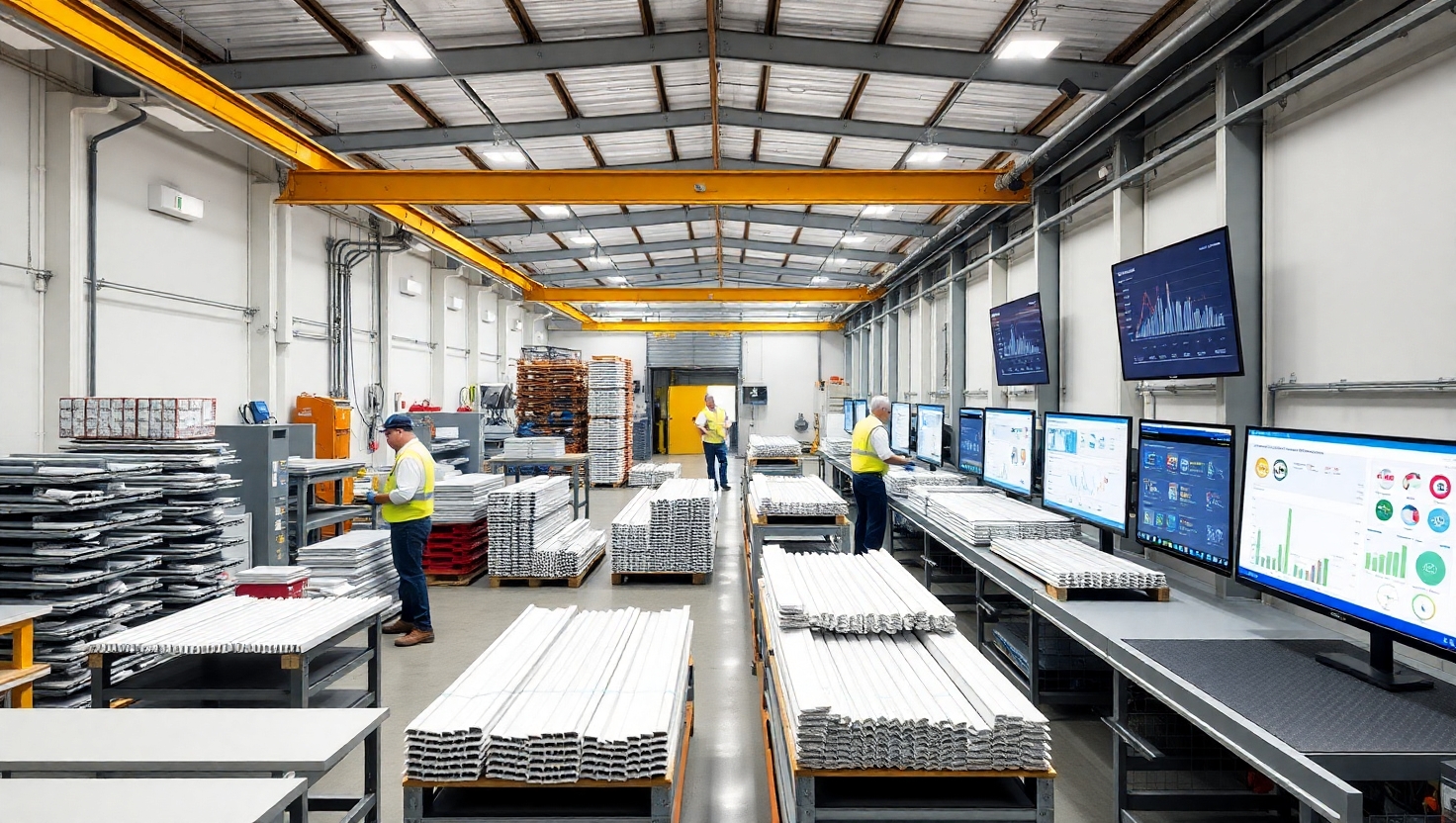Lean Manufacturing in Aluminium Extrusion: A Real-World Case Study
Published by: ALUTimes | Date: July 18, 2025
Table of Contents
- Introduction to Lean Manufacturing
- Core Principles of Lean
- Implementing Lean in Extrusion
- Benefits of Lean for Aluminium Plants
- Common Challenges and How to Overcome Them
- Case Study: Lean Transformation in Action
- The Future of Lean in Aluminium Manufacturing
- Conclusion
- Disclaimer
Introduction to Lean Manufacturing
Lean Manufacturing is more than just a buzzword—it’s a proven methodology for reducing waste, improving efficiency, and driving continuous improvement. In the aluminium extrusion sector, where operational margins are tight and precision is critical, Lean offers a roadmap to streamline production without compromising quality.
Core Principles of Lean
The five core principles of Lean Manufacturing include:
- Value: Understand what your customer values and eliminate everything else.
- Value Stream Mapping: Map all activities in the production process and eliminate waste.
- Flow: Ensure smooth, uninterrupted flow of materials and work.
- Pull: Produce only what’s needed, when it’s needed.
- Perfection: Continuously improve to approach perfection.
Implementing Lean in Extrusion
Adopting Lean principles in aluminium extrusion involves several tactical steps:
- Standardize die changeover procedures
- Implement 5S workplace organization
- Use Kanban to manage billet and profile inventory
- Deploy Total Productive Maintenance (TPM)
- Measure OEE (Overall Equipment Effectiveness)
These practices reduce setup time, increase uptime, and eliminate non-value-added activities.
Benefits of Lean for Aluminium Plants
Lean delivers a range of benefits when applied effectively in extrusion plants:
- Reduced cycle times and lead times
- Lower operating costs and energy consumption
- Improved on-time delivery performance
- Higher employee engagement and safety
- Better quality profiles and fewer defects
Common Challenges and How to Overcome Them
Lean transformation is not without hurdles. Common issues include:
- Resistance to Change: Engage employees early through training and open communication.
- Lack of Leadership Support: Ensure management is committed and involved.
- Poor Data Visibility: Use dashboards and KPIs to monitor progress in real time.
Case Study: Lean Transformation in Action
Company: ExtrudeMax India Pvt Ltd
Challenge: Long setup times and inconsistent profile dimensions
Lean Tools Used: SMED (Single-Minute Exchange of Die), 5S, TPM
Results:
- Die change time reduced by 35%
- Defect rates fell by 28%
- Energy use decreased by 14%
- Overall productivity improved by 22%
The Future of Lean in Aluminium Manufacturing
Lean is evolving to include digital and AI-enhanced tools. Future-ready extrusion plants are adopting:
- Digital Value Stream Mapping (VSM)
- AI-driven predictive maintenance
- Real-time production monitoring systems
These advancements take Lean to the next level, enabling smarter, faster, and more adaptive operations.
Conclusion
Lean Manufacturing is revolutionizing aluminium extrusion plants. By reducing waste, improving quality, and fostering a culture of continuous improvement, Lean provides a competitive edge in today’s demanding market. Companies that embrace Lean are positioned to lead in efficiency, profitability, and sustainability.
Disclaimer
This article is intended for informational purposes only. ALUTimes does not endorse any specific company or approach. Results may vary based on implementation and operational context.

